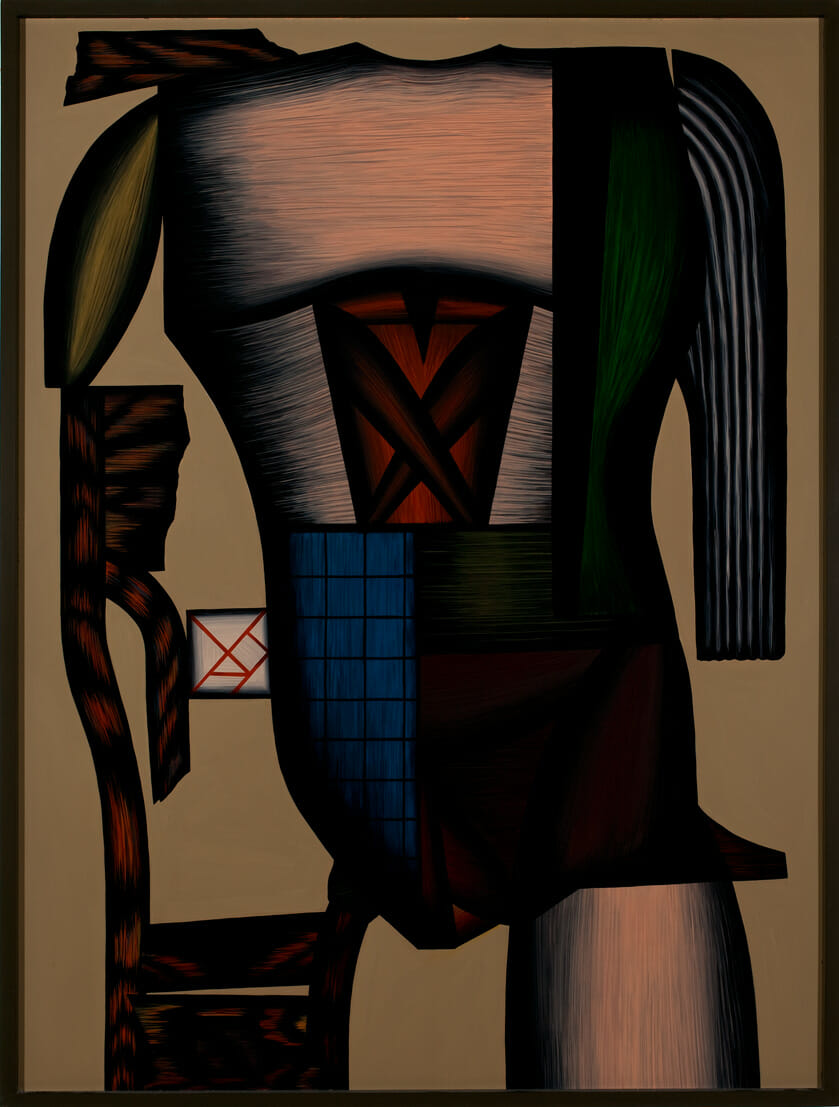Vertical Amnesia
Christina Ramberg
1980
acrylic
47 3/4" x 35 5/8"
Like many of the Chicago Imagists, Christina Ramberg was a collector. She collected everything from medical illustrations and paper dolls to comic book clippings. She also collected and cataloged illustrations and quotations from library books, which she then meticulously copied into her sketchbooks. Arranged and divided by a date from an inked rubber stamp, her collections of hand-drawn illustrations included knots, origami, baskets, textile patterns, and techniques for folding drapery. These observed patterns and textures would eventually become her painting palette.
Starting in the late ‘70s, Ramberg overlaid these observed patterns onto disparate forms to render a series of bodies painted only from the neck down to the mid-thigh. In Vertical Amnesia (1980), a relatively androgynous body is cobbled together to form a whole and floats in an uninhabited space: a lavender striped sleeve tucks itself under a torso comprised of smooth, sinewy patches of peach and dark green; blue window-pane fabric alongside draped layers of dark red fabric comprise the abdomen and groin; and a small origami cube rests on the right hip. All of these components are darkly outlined as if cut and assembled from the pages of a comic book or a sewing pattern.
In a June 5, 1979, sketchbook entry Ramberg wrote: “I want to pt. [paint] empty garments but not copy specific style. Encorporate (sic) other things – natural forms. Asymmetry is want of coordination of interrelated parts.” In Vertical Amnesia, the armature for the figure’s right arm and leg is constructed from hair that mimics woodgrain and also resembles a broken chair. A red shirt, sleeves neatly folded inward, is nestled inside the pink muscles of the chest as if surgically retracted or enclosed in a gift box. The same red shirt appears in her sketchbook on November 19, 1980, as “folded sleeves” in a set of numbered drawings of her imagined, amalgamated pieces of clothing, objects, and patterns.
Ramberg’s conflation of skin, fabric, wood, paper, and muscle is perhaps a testament to the ephemeral nature of the body: everything is created from matter, molecules, and cells. The concept of the body as merely an assemblage of cells allowed Ramberg to dissect, merge, and stitch her figures together from the multitude of patterns she discovered between the pages of books and the world around her.
On View
Henry Street Gallery
Credit
Museum Purchase, through funds from George and Sally Johnson and the Rudolph and Louise Langer Fund


